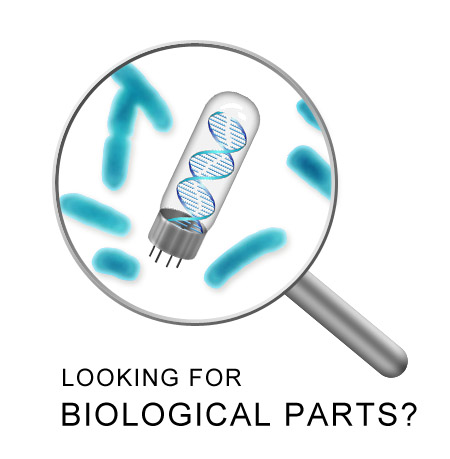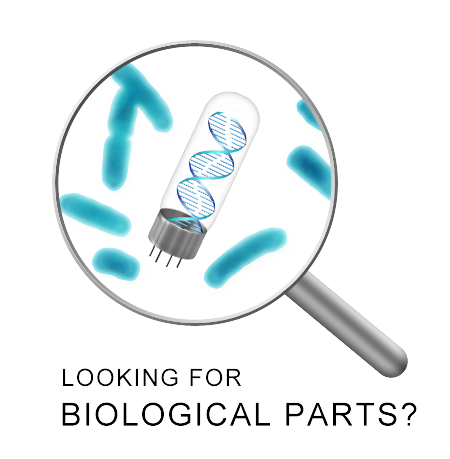Difference between revisions of "Main Page/Logo Redesign"
(→DNA vacuum tube) |
|||
| Line 53: | Line 53: | ||
== DNA vacuum tube == | == DNA vacuum tube == | ||
| + | [[Image:USTC Logo Scheme.jpg]] | ||
| + | [[Image:USTC Logo Scheme.png]] | ||
Revision as of 14:52, 17 November 2007
Registry Logo Redesign Contest! Win an iPod or a Wii!
Go ahead, take a look at the upper left corner of our beloved Registry website. If you're like us, you're probably thinking the black book with the ghostly cell-gear and the "Catalog" title is looking a little outdated. Ok, more than a little outdated. We couldn't agree with you more, and we think you could do a much better job. We want to invite you to redesign the Registry logo.
Sound cool? Think about how you could represent the concept of the Registry of Standard Biological Parts in an enticing, cool, sleek, slick, shiny, poppy, sciency, nerdy, sexy, accurate, hip new way. Post a design on this page for the community to see and comment on and make suggestions for tweaks and revisions. If everyone likes the final version, we'll use it, highlighting your creative genius for the entire Synthetic Biology community to see. And as if the glory isn't a good enough motivation, we're also going to give you a brand new Apple iPod or Nintendo Wii! (Just think about how fun a Wii would be in lab! :)
Rules
- Deadline: November 19 at Midnight
- Winner announced: November 26
- Anyone can submit designs
- Winning entries must provide the source of the design
- The winner or non-winner is our (the Registry staff) sole decision and is final
- We reserve the right to modify the design as we choose.
- Logo ideas that are not accepted may inspire future designs. We are not liable for any possible future use of ideas arising from this competition.
Background
The mission of the Registry is to collect and provide standardized, reliable biological parts to enable synthetic biologists to design and construct biological machines. Parts are defined as bits of DNA that have been designed (and then often constructed) to have a particular biological function with defined inputs and outputs. The Registry acts as a clearinghouse for these parts as well as the biological devices and systems that are built from these parts.
The new logo should embody and convey the purpose of the Registry. Consider the principles of an abstraction hierarchy and composition.
Entries
DNA Screw
| In 1964, William Sellers of the Franklin Institute proposed a new easy-to-use screw thread standardization. His efforts allowed parts to be made in bulk and swapped out when needed. The freeing up of machinists to make complex devices instead of custom screws allowed the industrial revolution to take off. In the same way, the Registry of Standard Biological Parts will allow scientists to spend less time designing and testing genes and more time constructing complex solutions. The transformation of the screw into a strand of DNA symbolizes this application of an old concept in a new revolution. | |
| Image Sources: [http://www.istockphoto.com/file_closeup/?id=1652311&refnum=469721 Screw from iStockphoto] [http://researchfrontiers.uark.edu/6284.htm DNA from University of Arkansas] | |
Though I think this is an appropriate and attractive design, I am not very good at Photoshop, so it would be best if some who really knows how to do picture editing touched it up. [http://filer.case.edu/drh19/DNA_Screw_Logo/DNA_Screw_Logo.psd Here] is my .psd file for those who want to make improvements. (The containing folder has some more files that you might find of interest.) I wanted to make a transparent background so that the background could be swapped out at will, but I could not get the magic wand to select the background without deleting some of the letters and balls at the bottom as well. David Hagen 18:20, 19 October 2007 (EDT)
DNA vacuum tube
Vacuum tubes were the critical devices that enabled the development of electronics technology. In 1946 J. Presper Eckert and John W. Mauchly, both of the University of Pennsylvania, constructed ENIAC (an acronym for electronic numerical integrator and computer), a digital machine and the first general-purpose, electronic computer. Its computing features were derived from Atanasoff's machine; both computers included vacuum tubes instead of relays as their active logic elements, a feature that resulted in a significant increase in operating speed. (from Wikipedia)
This DNA vacuum tube is a fanciful part with some specific function. The Registry of Standard Biological Parts enables scientists to search for parts of different functions expediently, as described in the logo.
Remark
This logo is designed by Zhang Kuiwen from USTC (University of Science and Technology of China), whose Email is zkw <at> mail <dot> ustc <dot> edu <dot> cn .
No third-party images are used, since the size of the design may probably be changed, which results in blurring. I also export a pic with transparent background in .png format.






